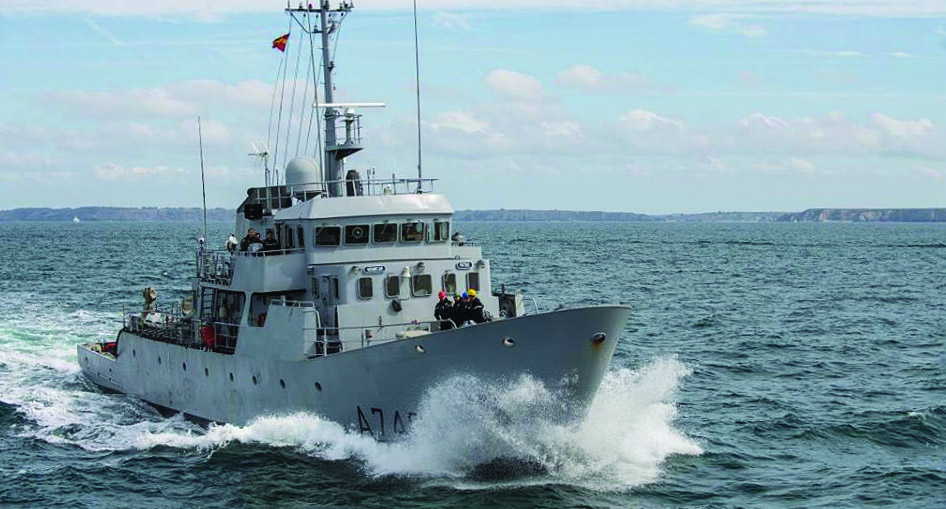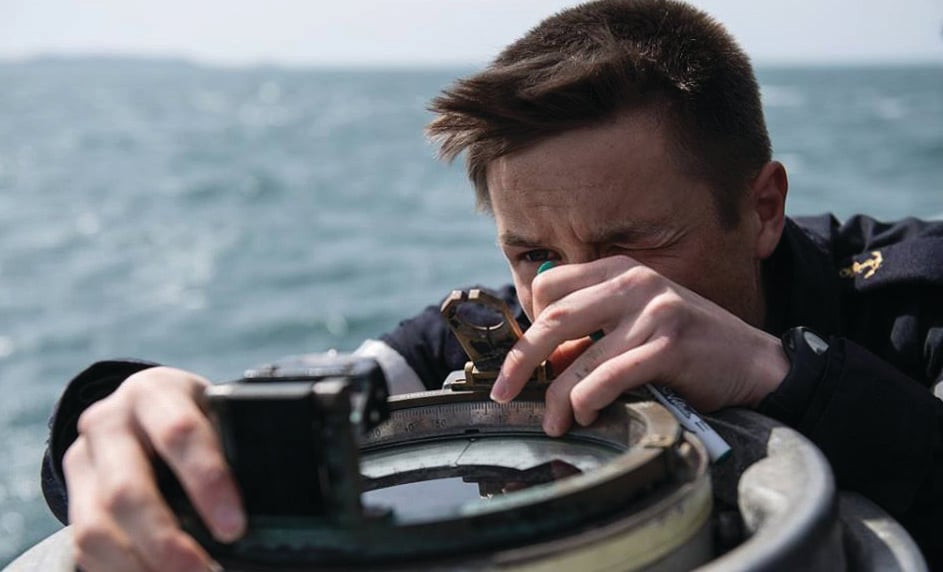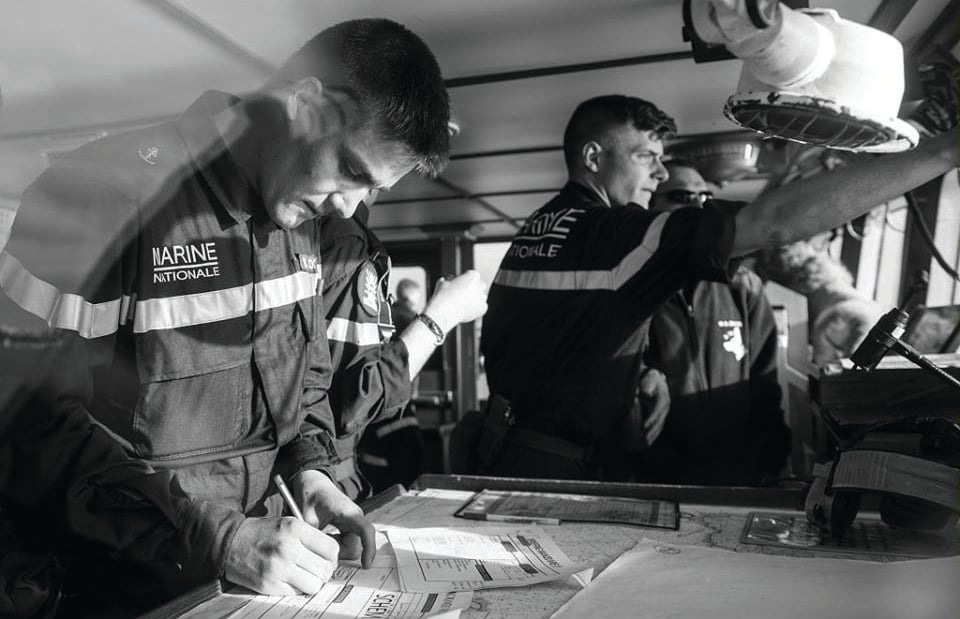
Established in Lanvéoc, Western Brittany, after World War II, the French Naval Academy sits along the roadstead, or bay, of Brest. This large bay of 70 square miles, deep water, and an abundance of visual navigation aids is an ideal location for the school’s training area of operations. With a focus on the basic building blocks of navigation, the frequent use of training ships, and an intense curriculum that includes a four-month deployment, the French Naval Academy prioritizes the development of sound seamanship among its officer ranks.
The French Naval Academy is a three-year program following two years of preparatory school and a rigorous entrance exam. It commissions roughly 80 naval officers each year. Maritime instruction is one of three basic domains taught during the first two years at Lanvéoc. The final year concludes with a four-month deployment, called the Mission Joan of Arc, on board a Mistral-class amphibious assault ship (bâtiment de projection et de commandement [BPC]) and alternates between Pacific and Atlantic Ocean deployments. By the time they complete the three-year curriculum, junior naval officers have a breadth of theoretical and practical knowledge and are close to qualification as officers of the deck. (Formal qualification is deferred to the commanding officer of their first command.) All deck officers, including those who will become submariners and aviators, complete this training; engineering officers have an alternate training pipeline.
With an eye toward the Mission Joan of Arc deployment, maritime training during the first two years at the French Naval Academy is a demanding mix of both the theoretical and the practical. The Maritime Department, helmed by an O-6 captain, is supplied with a marina of training ships, a cadre of senior quartermaster instructors, and four bridge simulators. Students receive an average of 244 hours per semester of maritime training, consisting of both classroom time and hands-on instruction.
The department adopts a building-block approach to seamanship. Midshipmen are expected gradually to work their way up to increasingly complex qualifications. By the end of their second year, they may be qualified as rigid hull inflatable boat operators, J/80 sailboat skippers, captain’s gig skippers, or have obtained basic damage-control qualifications. In addition, the Engageante-class shiphandling training ship (bâtiment d’instruction à la manoeuvre [BIM], pictured above), of which the school has two, is used to teach shiphandling and pierside work. With a length of 24 meters and a displacement of 86 metric tons, the BIM’s design mimics the ship-handling characteristics of a much larger frigate.

Maritime training at Lanvéoc is consolidated every semester during a three-week period of simulator and underway instruction, referred to as the Corvette. During the week-long bridge simulator training or pre-Corvette, midshipmen stand multiple two- to three-hour watches every day between 0800 and 2230. Working in teams of three (an officer of the deck who also acts as conning officer, a quartermaster of the watch, and a helmsman), midshipmen acclimatize to underway operations. When they are not on watch, students take navigation classes or prepare paper charts for the next watch. These sessions rely almost exclusively on visual navigation and visual fix-taking. Use of GPS and radar is not integrated into the watch until the second year.
Following the week-long pre-Corvette, midshipmen spend two weeks under way on board a Léopard-class training ship (bâtiment-école [BE]). The BEs, all based at the nearby naval base at Brest, are 43 meters in length, have a displacement of 355 metric tons, and a maximum speed of 15 knots. They are commanded by lieutenants with at least two sea tours. The rest of the crew of 14 consists of two senior quartermasters qualified as officers of the deck, boatswain’s mates, and engineers.
Deployed in groups of three to five, the BEs carry up to 18 students each. During these two-week under way periods, the BEs navigate inland and international waters. Standing a three-section watch, midshipmen hone their visual navigation skills while conducting frequent man-overboard and flight-quarter drills. At least once a day, the BEs practice underway replenishment approaches with one another, complete with phone and distance line. When not on watch, students prepare charts and conduct daily navigation and operations briefs. The midshipmen’s performance is carefully scrutinized by the BE’s commanding officer, who provides them with an overall grade.

By the time French midshipmen are ready to deploy with the Mission Joan of Arc, they have developed the basic building blocks of watchstanding. The deployment provides the experience of navigating distant waters and heavily trafficked straits. When they first report to the fleet, French junior officers are competent and comfortable on the bridge of an operational warship and qualify as officer of the deck three to six months after reporting on board.
The French Navy is much smaller than the U.S. Navy, but as a blue-water force it has watchstanders who can competently navigate the world’s waterways and conduct complex operations safely. At a time when the U.S. Navy surface warfare community is looking to improve its seamanship and navigation training and proficiency, several of the French Navy’s training elements could serve as models. A fleet of training ships installed in Norfolk or San Diego would give junior surface warfare officers valuable training during maintenance periods or times of limited underways. Even the French Navy’s practice of using paper charts and visual fixes while limiting reliance on GPS could reinforce basic seamanship skills.
The resources the French Naval Academy invests in training midshipmen underline the value placed on basic seamanship and navigation skills. In this way, the French Navy is able to maintain a mariner culture at its Naval Academy, and in its fleet that contributes to safe and professional operations at sea.
Lieutenant Commander Mecklenburg served on board the USS Benfold and USS Sampson. She is currently the U.S. Navy exchange officer at the French Naval Academy.


